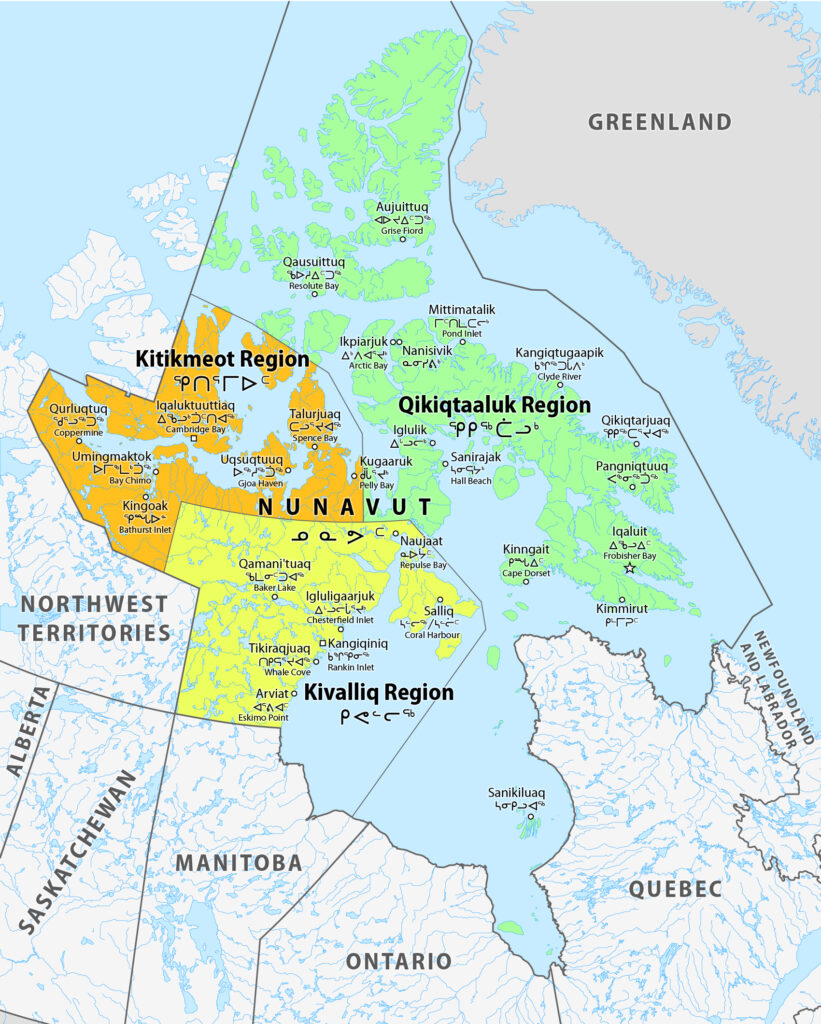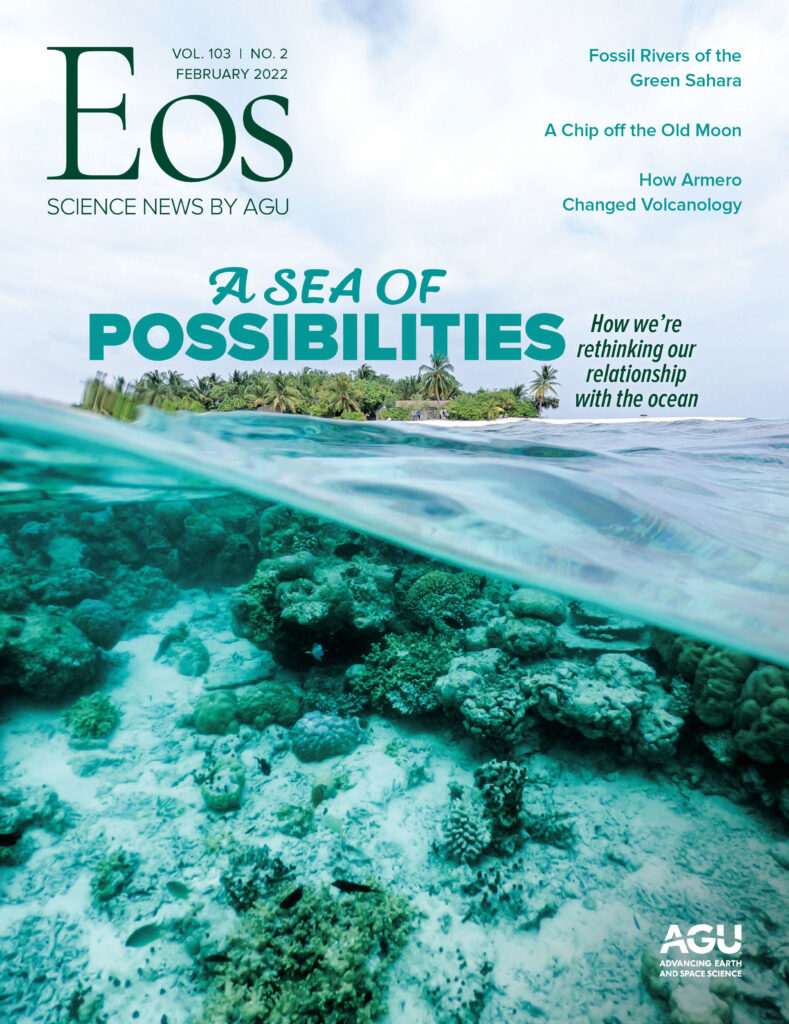A translation of this article was made possible by a partnership with Planeteando. Una traducción de este artículo fue posible gracias a una asociación con Planeteando.
In the Canadian Arctic Archipelago (CAA), the strength of tides in the Kitikmeot Sea is more connected to sea ice cover than what has previously been thought and what has been observed in neighboring regions. This new understanding of the sea ice–tide connection, which came about from a year’s worth of ocean monitoring and state-of-the-art tidal modeling, suggests that as climate change lengthens the ice-free season in this region of the Arctic, the strong-tide season will lengthen, too, and could trigger a feedback loop of sea ice melt.
“In the Kitikmeot, the tidal height and currents are reduced by around 50% due to the seasonal sea ice,” explained Lina M. Rotermund, an oceanographer at Dalhousie University in Halifax, N.S., and lead researcher on the project. “The ice-free periods are becoming longer, so we will see longer periods of the stronger tides and shorter periods of the reduced tides.”
Melted Ice Leads to Stronger Tides
In the Arctic winter, the seas freeze over with ice, and in the Arctic summer the seas thaw. This cycle, as straightforward as it may seem, is just one component of the seasonal changes in the cryosphere. “Every winter the tides are reduced by the sea ice,” Rotermund said. In the Arctic and elsewhere, tides can bring both nutrients and heat from the seafloor to the surface and therefore play an important role in ocean dynamics and ecosystems. Too, they regulate the production of sea ice.

The sea ice–tide connection has been studied before for some regions of the CAA, but not with such focus on Kitikmeot, she said. “In some regions the seasonal change in the tides due to sea ice is strong, and in other regions it has negligible effects.” Despite this connection, most computer models of sea ice growth don’t account for the role that tides play in regulating the location, thickness, concentration, and movement of Arctic ice.
To better understand the sea ice–tide relationship, the researchers collected a year’s worth of tidal data from Dease Strait in the Kitikmeot Sea (just west of Iqaluktuuttiaq, also known as Cambridge Bay), which they used to determine tidal height and currents for the year. From those data they found that the wintertime tides were 50%–60% shallower and 65% slower than the summertime tides. They used these data to help build a high-resolution tidal model of the entire Kitikmeot region, including its many narrow and shallow straits. They examined whether the tide dampening is widespread in winter and what it is about sea ice that dampens those tides.
“Strong tidal dissipation in the Victoria Strait region leads to smaller tides in the Kitikmeot Sea” in both summer and winter, Rotermund said. Victoria Strait is a key passage through which the Atlantic tides enter the Kitikmeot Sea. On top of that, the model showed that “in the wintertime, sea ice friction as well as sea ice blockages formed by thick, rough sea ice within Victoria Strait [cause] additional wintertime tidal dissipation.” The researchers verified their model using tide height measurements collected throughout the region. These results were published in the Journal of Geophysical Research: Oceans in April.
Could Climate Change Trigger the Feedback Loop?
“Tidal mixing can bring subsurface heat to the surface and contribute to melting of ice.”
The dual seasonal cycles of sea ice and tides could be knocked out of balance by the additional melting of sea ice caused by human-driven climate change. “Less sea ice will lead to longer seasons of strong tides,” Rotermund said; “however, it is not the high tidal level but the strong tidal currents that could complete the feedback loop. Strong tidal currents lead to more [vertical] tidal mixing, particularly in shallower waters. In Arctic winters, the ocean surface is colder than the bottom water layers. So tidal mixing can bring subsurface heat to the surface and contribute to melting of ice.” Thus, the reduction in sea ice leads to stronger tides, which in turn can lead to a further reduction in sea ice.
“In the eastern Arctic Ocean, the recent strengthening of tidal currents has already brought more heat than usual from the interior of the ocean to the surface, causing more sea ice to melt—setting up a reinforcing cycle,” University of Alaska Fairbanks oceanographer Igor Polyakov told Hakai Magazine in September. “Studies like this are very important and useful because the effects of tides on Arctic waters and the ecosystem are often understated.” Polyakov was not involved with this research.
The feedback loop between sea ice and tides could play a much larger role than expected in some regions. “In the Kitikmeot region the tides are reduced by about 50% from summer to winter,” Rotermund said, “while in the western Canadian Arctic Archipelago [the reduction] is about 25% and in the eastern Canadian Arctic Archipelago it is about 5%–10%.”
Going forward, she said, these regional differences need to be better accounted for in models of sea ice and Arctic tides. The researchers continue to monitor tides and sea ice in Kitikmeot and plan to examine how the longer periods of strong tides affect the formation of polynyas (persistent open water in otherwise ice-dominated areas) and their impact on ocean ecosystems.
—Kimberly M. S. Cartier (@AstroKimCartier), Staff Writer


